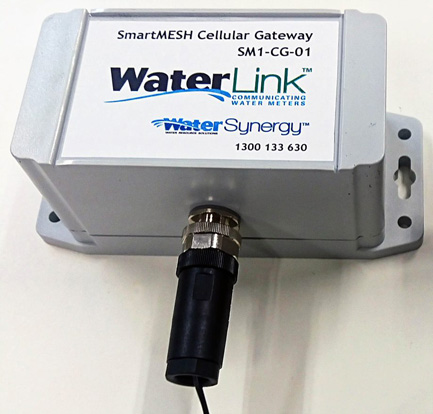U-Blox modules in Australian mesh water meter trial
- May 20, 2020
- imc

A trial of mesh-networked water meters in Australia is using Bluetooth Low Energy and NB-IoT modules from Swiss company U-Blox.
The modules are being used in the WaterLink SmartMesh water meter from WaterSynergy Group, an Australian company focusing on the management of water resources. It uses mesh-networking technology to connect a number of water meters to each other and to a cellular gateway.
The technology includes U-Blox’s Nina-B3 stand-alone Bluetooth Low Energy modules and Sara-R410M-02B LTE-M, NB-IoT and EGPRS cellular module for LPWA applications.
The mesh-networking technology relies on hardware within the Nina-B3 module and a software stack developed by Wirepas, a company based in Finland providing wireless mesh network connectivity for massive IoT.
Many water meters are still read manually. Current efforts to connect water meters to the internet to simplify meter reading either use propriety RF protocols or direct cellular connections as an alternative for more remote or isolated devices.
The Wirepas mesh software uses a decentralised architecture that improves robustness and efficiency throughout the network. This mesh stack is scalable and, low power, and lets users design devices that can form their own mesh networks. The resultant networks can access multiple gateways to ensure redundancy, and even automatically heal themselves if individual nodes, such as meters, routers or gateways, drop out of service.
“The combination of scalable mesh IoT network software from Wirepas and robust hardware from U-Blox is enabling us to simplify the installation of water meters – as an example, along with additional applications – and therefore cut the total cost of ownership for customers,” said George Prencipe, director of WaterSynergy Group. “Field trials of our SmartMesh offering are already under way and we expect customer referrals once cost savings are realised.”
SmartMesh water meters are security sealed and, thanks to the efficiency of the Wirepas protocol as integrated within the Nina-B3 module, are expected to run for up to 15 years on the internal battery. The Nina-B3 modules use 2.4GHz frequency and an internal antenna to establish robust communications, even in difficult RF environments.
WaterSynergy Group also offers a SmartMesh cellular gateway, which can use either the NB-IoT or Cat-M1 low-power cellular communications protocols to make a wireless connection to the internet for up to 100 SmartMesh modules. These protocols typically provide greater RF penetration than higher category 4G services, adding to the overall robustness of the offering. Wirepas mesh routers are also suitable for difficult reception areas or even to bridge building-to-building applications.
Developing the SmartMesh product range demanded the integration of hardware, firmware and application software from multiple sources.
“U-Blox gave us great support as we developed this complex product,” said Ray Keefe, director and owner of design consultancy Successful Endeavors, which worked with the WaterSynergy Group. “What made the job simpler was the robustness of the U-Blox Nina-B3 module design and software support, and its easy integration with the Wirepas mesh communications stack.”
Jason Meilhon, senior business development manager at U-Blox, added: “WaterSynergy’s SmartMesh data logger is a great demonstration of the advantages of meshed networking for connected devices. We expect that the use of mesh networking for IoT devices will grow exponentially in the next five years.”
With headquarters in Thalwil, Switzerland, U-Blox is globally present with offices in Europe, Asia and the USA.





